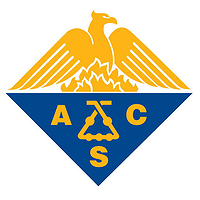The closed-shell mean-field single determinants of large alternant hydrocarbons are frequently unstable with respect to a possible spin-symmetry breaking which produces different orbitals for the alpha and beta electrons, either in Hartree-Fock or in Kohn-Sham DFT calculations. The present work shows that one may easily predict whether such a symmetry breaking will take place from the elementary topological Huckel Hamiltonian which introduces a simple hopping integral t. The demonstration makes use of the simplest representation of the bielectronic repulsion, namely, the Hubbard bielectronic operator, reduced to an on-site repulsion U, and takes benefit of the mirror theorem. A recipe is proposed to determine the relevant t/U ratio for a given exchange-correlation potential. The symmetry-breaking phenomenon first concerns the mixing between the highest occupied molecular orbital (HOMO) and the lowest unoccupied molecular orbital (LUMO), but it may eventually run on other pairs of mirror orbitals. These symmetry breakings may take place while the other molecular orbitals keep a closed-shell character. The spin polarization of these MOs, appearing in typical unrestricted mean-field calculations, is an induced and amplifying effect, which has to be distinguished from the symmetry breaking itself. Special attention is paid to the possible appearance of multiple symmetry breakings, leading to a polyradical character. The model is tested on six series of polycyclic hydrocarbons. This elementary approach sheds new arguments on the debate concerning the di- or polyradical character of polyacenes.

Can a Topological Approach Predict Spin-Symmetry Breaking in Conjugated Hydrocarbons?
Review badges
0 pre-pub reviews
0 post-pub reviews